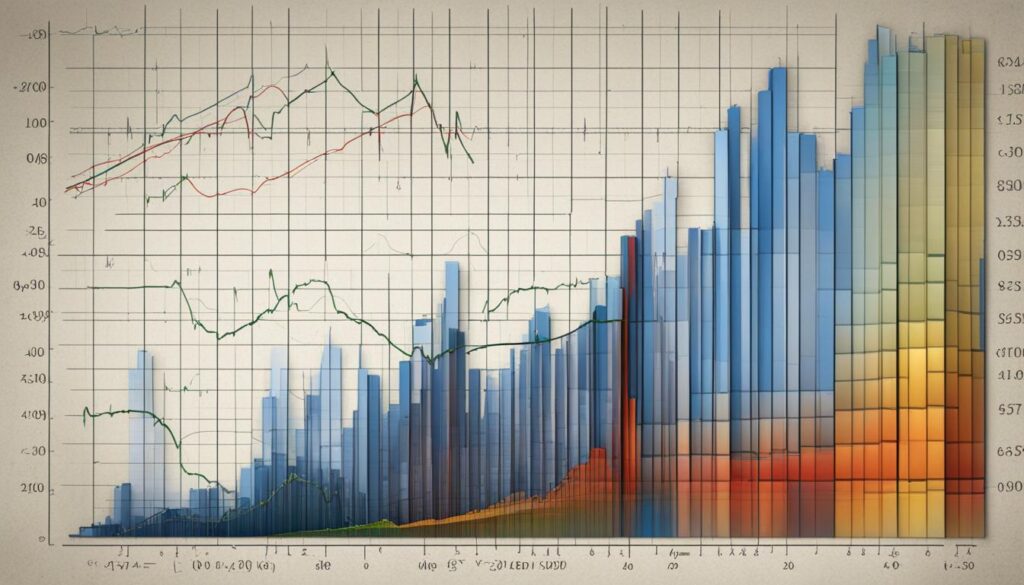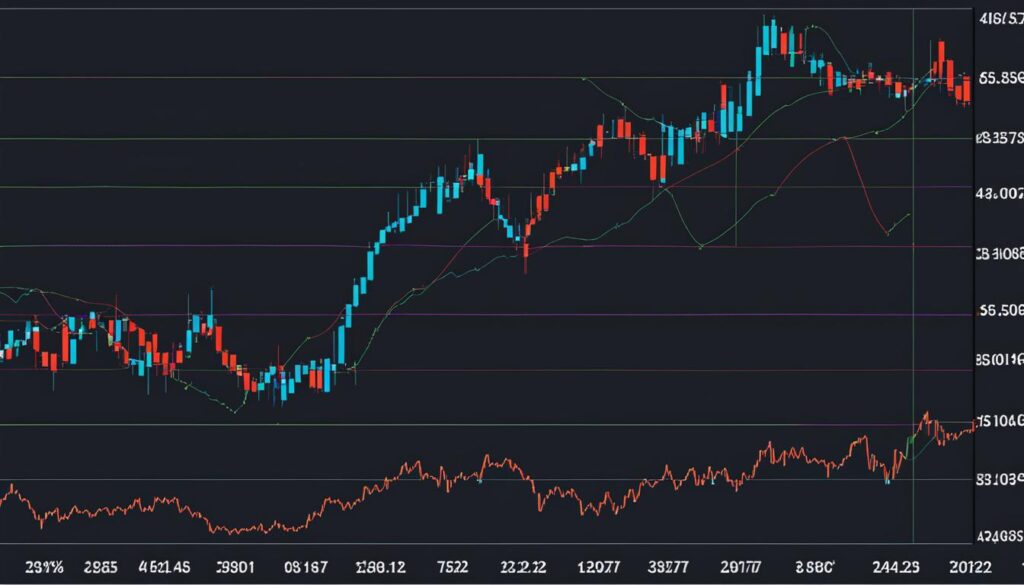In today’s fast-paced and volatile markets, investors need advanced strategies to navigate the ups and downs of the financial landscape. One such strategy is advanced options trading, which allows investors to take advantage of event-driven volatility to optimize their portfolio performance.
Event-driven volatility refers to the fluctuations in stock prices that occur as a result of specific market news or corporate events. These events can include mergers and acquisitions, earnings announcements, management changes, and more. By understanding the impact of these events on stock prices, investors can develop strategies to generate returns.
Implementing event-driven trading strategies requires a deep understanding of market dynamics and a keen eye for spotting opportunities. Hedge fund managers and institutional investors are often at the forefront of event-driven investing, leveraging their expertise and specialized teams to exploit pricing inefficiencies before or after a risk event.
Key Takeaways:
- Advanced options trading strategies are designed to optimize portfolio performance in volatile markets.
- Event-driven trading strategies involve investing in opportunities arising from news events and corporate events.
- Understanding event-driven strategies requires expertise in analyzing corporate events for successful execution.
- Options trading strategies can be used to capitalize on high implied volatility in the market.
- Going long puts and shorting calls are options strategies commonly used in high implied volatility environments.
Event-Driven Trading Strategies
Event-driven trading strategies offer investors the opportunity to capitalize on market movements resulting from news events and corporate activities. By identifying and leveraging these opportunities, investors can potentially generate significant returns. Event-driven trading strategies involve analyzing and predicting the impact of various events, such as mergers and acquisitions, management changes, earnings calls, spin-offs, and restructuring.
Hedge fund managers often employ event-driven strategies, utilizing equities or credit securities like bonds to implement their investment approach. These strategies can be divided into two main categories: merger arbitrage and distressed debt.
Merger arbitrage: This strategy involves taking advantage of pricing disparities that occur during the merger process. Traders aim to profit from the difference between the current market price of the target company and the price agreed upon in the merger deal.
Distressed debt: In this strategy, investors seek opportunities in financially distressed companies. These companies may face bankruptcy, restructuring, or other significant challenges. By analyzing the potential for recovery and the company’s ability to overcome its difficulties, traders can profit from potential price increases.
Event-driven strategies generally have a high correlation to equities and are expected to perform well in rising markets. They can also offer some protection in falling markets due to the specific nature of the events driving the investments.
To provide a clearer understanding of event-driven trading strategies, here is an illustrative example:
| Event | Strategy | Expected Outcome |
|---|---|---|
| Merger announcement | Merger arbitrage | Profit from the price difference during the merger process. |
| Company restructuring | Distressed debt | Profit from potential price increases if the company successfully recovers. |
| Earnings call | Event-driven equity strategy | Profit from fluctuations in stock price based on earnings announcements. |
By implementing event-driven trading strategies, investors can take advantage of opportunities presented by news events and corporate actions, potentially maximizing their returns.
Understanding Event-Driven Strategies
Event-driven strategies form a crucial part of an investment strategy. These strategies capitalize on temporary stock mispricing that arises before or after a corporate event. Private equity firms and hedge funds often employ event-driven strategies due to the expertise required in analyzing and executing trades based on corporate events.
Corporate events encompass a range of activities, including restructurings, mergers and acquisitions, bankruptcy filings, spin-offs, and takeovers, among others. Traders typically assemble teams of specialists to meticulously analyze corporate actions and predict their impact on stock prices.
By accurately forecasting how a corporate event will affect a stock’s value, investors can generate substantial profits from the resulting stock mispricing.
| Benefits of Event-Driven Strategies | Challenges of Event-Driven Strategies |
|---|---|
|
|
Event-driven strategies provide investors with the opportunity to take advantage of market inefficiencies resulting from corporate events. However, successful execution requires a thorough understanding of the market and the ability to accurately assess the impact of corporate actions on stock prices.

Options Trading Strategies for High Implied Volatility
When it comes to navigating the market’s volatile periods, options trading strategies can provide a valuable tool for investors. One key aspect to consider is implied volatility, which plays a crucial role in determining the price of options. By understanding and effectively utilizing high implied volatility, traders can capitalize on market fluctuations and generate profits.
There are several options trading strategies that can be employed during periods of high implied volatility. Let’s explore some commonly used strategies:
- Going long puts: This strategy is suitable for traders who anticipate a bearish market outlook. By purchasing put options, traders can profit from potential declines in a stock’s price. With high implied volatility, put options tend to increase in value, allowing traders to benefit from market downturns.
- Shorting calls: Traders with a bearish or neutral outlook on a particular stock can opt for this strategy. By selling call options, traders collect premiums and profit if the stock price declines or remains stagnant. However, it is important to note that shorting calls comes with unlimited risk if the stock price rises significantly.
- Shorting straddles or strangles: These strategies are employed when minimal price movements or stability are expected in the underlying stock or asset. By selling both call and put options, traders can take advantage of option decay and collect premiums. Monitoring the stock price closely is essential to maximize profitability.
- Ratio writing: This strategy involves writing a different number of options contracts at varying strike prices to create a specific risk-to-reward ratio. It can be particularly useful in high implied volatility environments, allowing traders to capitalize on potential market mispricings.
- Iron condors: This strategy combines the sale of both a bear call spread and a bull put spread. It is popular during periods of high implied volatility as it offers limited risk with a wider range of profitability. Traders aim to profit from a relatively stable market where the underlying asset’s price remains within a specific range.
To successfully implement these options trading strategies, it is essential to understand the factors that determine option prices. These include the current price of the underlying asset, the strike price, the type of option, time to expiration, risk-free interest rate, dividends, and of course, volatility. By analyzing these factors, traders can make informed decisions and optimize their trading strategies.

High implied volatility can present numerous opportunities for options traders. By leveraging the right strategies and analyzing market conditions carefully, traders can navigate volatile markets and potentially generate significant profits.
Going Long Puts in High Implied Volatility
When it comes to navigating high implied volatility environments, one options strategy that traders often turn to is going long puts. This strategy is particularly useful for those with a bearish outlook on a specific stock, as it allows them to profit from potential declines in the stock’s price.
Going long puts involves purchasing put options which give the holder the right, but not the obligation, to sell the underlying stock at a specific price (strike price) within a certain timeframe (expiration date).
One of the key advantages of this strategy is that put options tend to increase in price as implied volatility rises. This means that in high implied volatility environments, the value of put options can rise significantly, allowing traders to profit from a stock price decline.
However, successfully implementing this strategy requires careful analysis of implied volatility and other underlying factors. Traders need to assess the potential impact of market events, economic indicators, and company-specific news that may affect the stock’s price. By approaching the market with a well-informed perspective, traders can make confident decisions about going long puts and increase their chances of generating profits.
Example:
Let’s say I have a bearish outlook on ABC Corporation due to a potential decline in demand for their products. The stock is currently trading at $50 per share, and I decide to purchase put options with a strike price of $45, expiring in one month.
If the stock price does indeed decline below $45 within the next month, the value of the put options will increase. I can then sell the put options at a higher price, realizing a profit.
On the other hand, if the stock price remains above $45 or increases, I have limited my losses to the premium paid for the put options.
Summary:
Going long puts is a valuable options strategy for traders with a bearish outlook on a particular stock in high implied volatility environments. By carefully analyzing implied volatility and underlying factors, traders can make informed decisions about implementing this strategy and potentially profit from expected stock price declines.
| Advantages | Considerations |
|---|---|
| – Profit potential from stock price decline | – Limited timeframe for the options to expire |
| – Increased value of put options in high implied volatility environments | – Potential loss if the stock price remains above the strike price |
Short Calls in High Implied Volatility
Shorting calls is a popular options strategy that can be highly effective in high implied volatility environments. This strategy involves selling call options on a stock with the expectation that the stock’s price will either decline or remain stagnant. Traders who implement short calls can collect premiums from the sale of these options, potentially generating income.
Short calls are typically employed by traders with a bearish or neutral outlook on a particular stock. They believe that the stock’s price will not increase significantly or may even decrease, allowing them to profit from the decline in value. It is important to note that shorting calls comes with unlimited risk if the stock price rises significantly. Therefore, risk management is crucial when implementing this strategy.
When engaging in short calls, traders need to carefully monitor their positions and have a clear exit strategy in place. This strategy requires consistent attention to market movements and a thorough understanding of the underlying stock’s fundamentals. By actively managing risk and closely monitoring their positions, traders can optimize their potential returns while minimizing potential losses.
Benefits of Short Calls in High Implied Volatility
- Opportunity to generate income through premium collection
- Potential profitability in bearish or neutral market conditions
- Flexibility to adjust positions based on changing market dynamics
Short calls can be a valuable addition to an options trader’s arsenal, especially in high implied volatility environments. By implementing this strategy with a keen understanding of market conditions and risk management, traders can potentially capitalize on bearish or neutral outlooks and maximize their returns.
“Short calls can be an effective strategy for traders seeking to benefit from high implied volatility. However, it’s important to remember the associated unlimited risk. Consistent monitoring and risk management are key to successful implementation.” – Options Trading Expert
Comparison to Other Options Strategies
| Options Strategy | Outlook | Risk | Potential Returns |
|---|---|---|---|
| Short Calls | Bearish or neutral | Unlimited | Premium collection |
| Long Puts | Bearish | Limited to the premium paid | Profit from stock price decline |
| Short Straddles/Strangles | Minimal price movements or stability | Unlimited if stock price moves significantly | Profit from option decay |
Short Straddles or Strangles in High Implied Volatility
In high implied volatility environments, where minimal price movements or stability are expected in the underlying stock or asset, short straddles and short strangles are options strategies that can be employed. These strategies involve selling call and put options and taking advantage of option decay. Traders collect premiums and potentially profit if the stock price stays within a certain range.
Option decay, also known as time decay, refers to the reduction in the value of an option over time as it approaches its expiration date. This decay occurs because options have a limited lifespan, and their value diminishes as time passes. By selling options, traders can benefit from this decay, earning income from the premiums they collect.
Short straddles entail selling both a call option and a put option with the same strike price and expiration date. This strategy is typically used when traders anticipate minimal price movements in the underlying stock. If the stock price remains within the strike price range until expiration, the options expire worthless, allowing traders to keep the premiums they collected.
Short strangles are similar to short straddles but involve selling call and put options with different strike prices. This strategy allows traders to create a wider price range in which they can profit. It is often used when traders anticipate even more limited price movements in the underlying stock. Again, if the stock price remains within the specified range until expiration, traders keep the premiums collected.
Here is an example of a short straddle trade:
| Stock | Strike Price | Premium |
|---|---|---|
| XYZ | $50 | $3 |
In this trade, the trader sells a call option and a put option on stock XYZ, both with a strike price of $50. The premium collected for each option is $3. If the stock price stays between $47 and $53 until expiration, both options expire worthless, and the trader keeps the $6 premium.
It’s important to note that short straddles and short strangles come with their own risks. If the stock price moves significantly outside the specified range, traders may face losses. Risk management and closely monitoring the stock price are essential to maximize profitability and minimize potential losses.
Conclusion
Advanced options trading strategies play a vital role in optimizing portfolio performance, especially during volatile markets. By leveraging event-driven trading strategies and capitalizing on high implied volatility, investors have the opportunity to achieve significant returns. Whether implementing the strategy of going long puts, shorting calls, or utilizing other options strategies, understanding volatility and effectively managing risk are crucial elements in realizing the full potential of these advanced strategies.
Event-driven volatility provides a rich environment for investors to capitalize on market news and corporate events. By carefully analyzing and predicting the impact of such events on stock prices, investors can make informed decisions to generate profits. Additionally, high implied volatility offers the opportunity to employ various options trading strategies that can potentially yield substantial returns.
However, while these advanced options trading strategies offer promising opportunities, it is important to approach them with caution and a thorough understanding of market dynamics. Proper risk management is essential to safeguard investments and minimize potential losses. By staying informed, monitoring positions, and continuously adapting strategies, investors can navigate the complexities of advanced options trading and position themselves to realize the full potential of these strategies in volatile markets.
FAQ
What are event-driven trading strategies?
Event-driven trading strategies involve investing in opportunities arising from news events and corporate events, such as mergers and acquisitions, management changes, earnings calls, spin-offs, and restructuring.
Who uses event-driven investing strategies?
Event-driven investing strategies are typically used by hedge fund managers and institutional investors to take advantage of pricing inefficiencies before or after a risk event.
What are the two main types of event-driven investing strategies?
The two main types of event-driven investing strategies are merger arbitrage and distressed debt.
How do event-driven strategies capitalize on temporary stock mispricing?
Event-driven strategies aim to capitalize on temporary stock mispricing that occurs before or after a corporate event, such as restructurings, mergers/acquisitions, bankruptcy, spin-offs, takeovers, and more.
What are options trading strategies for high implied volatility?
Options trading strategies for high implied volatility include going long puts, shorting calls, shorting straddles or strangles, ratio writing, and iron condors.
What is the purpose of going long puts in high implied volatility?
Going long puts is an options strategy used in high implied volatility environments to profit from potential declines in the stock’s price, particularly when analyzing implied volatility and underlying factors.
What is the strategy behind shorting calls in high implied volatility?
Shorting calls is a popular options strategy in high implied volatility environments where traders sell call options on a stock they believe will either decline in price or remain stagnant, collecting premiums in the process.
How do short straddles or strangles capitalize on high implied volatility?
Short straddles and short strangles are options strategies used in high implied volatility environments when minimal price movements or stability are expected in the underlying stock or asset, allowing traders to profit by collecting premiums.
Why are advanced options trading strategies valuable in volatile markets?
Advanced options trading strategies are valuable in volatile markets as they allow investors to optimize portfolio performance by utilizing event-driven trading strategies and capitalizing on high implied volatility.
What factors should be considered when implementing options trading strategies?
Factors such as the current price of the underlying asset, the strike price, the type of option, time to expiration, risk-free interest rate, dividends, and volatility should be considered when implementing options trading strategies to maximize profitability and manage risk.



